T.A. Barron's Blog, page 11
September 20, 2021
Congratulations to the 2021 Barron Prize Winners!

Each year, the Barron Prize awards outstanding young people whose personal stories and service work act as inspiring examples of the power we all have to make the world better. During a most difficult time in our lives, these outstanding young people rose to the challenge of helping others with creativity, compassion, and perseverance. By honoring and supporting these young heroes, we hope to inspire many others.
I invite you to take a moment to read through this year’s list of marvelous, accomplished young people, to visit their project sites, and learn more about them!
Abigail Y., age 17, of North Carolina, who founded the Sustainable Hunger Initiative (SHI) to help underserved families access healthy food and to address residential segregation and poverty.
Adarsh A., age 16, of California, who founded Green Environment Initiatives to design solutions for environmental crises and to provide STEM education for underserved students.
Alexandra C., age 17, of Illinois, who co-founded Students Against Ethylene Oxide (SAEtO), a nonprofit that engages youth in fighting to ban the carcinogenic gas EtO near schools and residential areas.
Brooke and Breanna B., age 14, of Alabama, twin sisters who co-founded Women In Training (WIT) Inc., a youth empowerment nonprofit that advocates for menstrual equity and menstrual education.
Duncan J., age 18, of Florida, who founded Bring Butterflies Back to protect and repopulate South Florida butterflies through education, conservation, and research.
Faraz T., age 14, of New Jersey, who invented TalkMotion, a device that helps people who are deaf and aphonic (voiceless) communicate with people who can hear by translating sign language into verbal language and verbal language back into sign language.
Gitanjali R., age 15, of Colorado, an inventor, young scientist, and advocate for STEM who conducts workshops for students around the world to support them in creating solutions to pressing problems.
Jordan R., age 15, of Missouri, who co-founded Born Just Right, a nonprofit that inspires kids with disabilities to design innovations based on their own differences and experiences.
Michael P., age 16, of Maryland, who created Michael’s Desserts to use his love of baking to help others. For every sweet treat he sells, he donates one to someone in need. He also founded P.L.L.A.T.E. – Power, Love, Learning, and Access To Everyone – to address food insecurity.
Miles F., age 9, of Florida, who founded Kids Saving Oceans to fundraise for ocean, beach, and marine conservation and to educate kids about saving our oceans, one choice at a time.
Olivia S., age 17, of California, who created The Cramm, a daily digital newsletter that summarizes the news for Gen Z in order to educate and activate her generation.
Rachel P., age 18, of California, who founded Curieus, a nonprofit that brings hands-on science to underserved kids to spark curiosity and increase diversity in STEM.
Shreyas K., age 16, of Kentucky, who founded Community AI (Artificial Intelligence) to support students in building AI-driven projects that help communities and the environment, unleashing the power of AI for good.
Sonja M., age 17, of New Jersey, who works to protect wetlands and drinking water sources using a novel bioassessment method she created.
Vivian W., age 18, of California, who co-founded Linens N Love, a nonprofit that rescues
gently-used hotel linens and donates them to shelters that support women and children, people experiencing homelessness, veterans, and animals.
When I look at the accomplishments of these inspiring young people and the scope of what they have achieved, I am filled with awe and appreciation. Their hard work makes their ideals and passions a reality and they are an example to us all. Please join me in celebrating their accomplishments!
The post Congratulations to the 2021 Barron Prize Winners! first appeared on TABarron.com.August 25, 2021
Tapping Into the Heroic Potential of Every Child

I’m often asked why I chose to write about the early years of the great wizard, Merlin.
What really made me fall in love with stories of young Merlin was the realization that Merlin, the original wizard and the greatest mage of all times, didn’t just spring into life as the ancient, wise, eccentric, powerful fellow we all know — the wizard in The Sword in the Stone or the many tales of Camelot. No way. So where did he come from? I started asking, What happened in his childhood? How did he come to be this great exalted wizard who is so beloved around the world? And also… what strange and terrible and mysterious things happened to him in his youth that made him want to keep those years a deep secret for centuries — his Lost Years?
Around that time, I woke up in the middle of the night from a vivid dream — a dream of a boy, half-drowned and only barely alive, who washed ashore on a strange land. He had no memory, no identity, no idea who he was. But he did have something special, maybe even magical, down inside. He felt drawn to the wonders and powers of nature. He had a great love for humanity, even with all our flaws. And he had that magic, which was destined to grow into something truly majestic. That was when I knew who he was — Merlin.
The story of Merlin’s youth is, at its heart, a metaphor for the heroic potential in every child. I sincerely believe that all kids have that wonderful capacity. But they need to hear heroic, inspiring stories to realize that. And every hero —whether fictional or real — must face some sort of obstacles, some sort of difficulties, in order to reach down inside to find the courage they need to triumph. This is as important in stories as it is in real life.
I believe that every person has some magic down inside. That’s true regardless of age, gender, background, or description. Everyone has the potential to find that special magic… and use it to help themselves and the world.
That’s why there are heroes are in all my books — and always will be. Why? Because heroes are important – today more than ever. Heroes (whether real or fictional) remind us who we really are, what we can become, and just how far we can go. Best of all, they remind us of our own heroic potential. For anyone, no matter how young or small or unlikely, can find heroic qualities down inside. Just like that half-drowned boy I once wrote about: He washed ashore on a strange, hostile coastline … and ultimately became Merlin, the greatest wizard of all times.
I’d also like to say a few words about what a hero does not mean: a celebrity. In our society, we often confuse the two, but they couldn’t be more different. A hero is someone who, faced with a tough challenge, reaches down inside—and finds the courage, perseverance, or wisdom to triumph. That someone could be utterly unknown to most of the world. It could be a girl or a boy; a Tibetan refugee you’ve never met or the person next door; a member of any race, culture, or economic group. But in every case, it’s someone with impressive qualities of character.
By contrast, a celebrity is just someone who has won our attention—whether for fifteen seconds or fifteen years. You can see the difference, can’t you? For a celebrity, what counts is fame—period. For a hero, though, what counts is character.
More than anything, heroes are important because they show that every person — young or old, black or white, rich or poor — can make a positive difference to the world. Each of us can be more than just what Madison Avenue calls consumers: We can be creators! Of our own lives, our own destinies.
Just like the young Merlin, all of us are washed ashore, half-drowned, at some point in our lives. All of us have hidden struggles… and hidden potential. And all of us, like the greatest wizard of all, have great magic within us: the ability to reach for the stars.
The post Tapping Into the Heroic Potential of Every Child first appeared on TABarron.com.August 23, 2021
Giant Courage Writing Contest
July 28, 2021
The Power of Stories

Writers have a special power — the power of stories. Authors, at their very core, are storytellers. When we publish a book, we invite readers into a different world and tell them about what they’ll find there.
Storytelling is an art form that’s not only appreciated by people who read and write stories, but also by those who listen to them. Stories provide entertainment; they can teach; they can inspire people to do something new or interesting in their lives as well as bring back memories of things that have happened in the past.
My dad was a great storyteller. He would often make us laugh as we sat at the dinner table, with his funny and irreverent stories — and nobody would laugh harder than him, his face creased in a wide smile and bushy red eyebrows raised with delight.
I learned much from him, but three things in particular: First, he never forgot the importance of humor. And second, he knew how crucial timing is in delivering a surprise, a twist of the plot, or a good punch line. Third, I learned something very important from him that has served me well as a writer and in every other aspect of life — there is no substitute for hard work. Watching my dad, who worked long hours to make sure his seven children could all go to college, I realized that any goal can be achieved if you focus your energies, persevere, and work very hard. Do the best job you can — and have some laughs along the way.
It’s because of his stories, and his life lessons, that I chose to be a storyteller myself. Writing allows me to explore — wherever and whatever I choose. It’s taken me back in time, to a distant galaxy, to the place where the sea begins, and to the origins of Merlin and Atlantis. Best of all, though, writing is a way to explore the biggest questions of life. Not to find the answers, perhaps, but to do some thoughtful exploring of the questions. The two best parts of the experience are, first, when a word or character or place or idea comes out just right — and, second, when something I’ve written truly touches someone in a meaningful way. And I’m always amazed and humbled by how much stories can mean to people! Believe me, over the years I’ve been given some truly amazing letters, comments, paintings, sculptures, music, theatrical productions, and even clothing from fans all around the world – not to mention some loving hugs – so I feel very lucky indeed to be a storyteller.
A good friend of mine, a former classics professor at Princeton, asked me to respond to this question: Can the idea of resilience be conveyed through stories?
Yes indeed, stories can convey the meaning of resilience. In fact, stories are the very best way to communicate resilience — or other core values such as courage, compassion, perseverance, honesty (with oneself as well as others), generosity, humility, and hope.
Why? Our brains are, quite simply, inclined to take in our most important ideas and moral principles through the context of stories. The more authentic and genuinely moving those stories are, the deeper those ideas will affect our lives and worldviews. When we inhabit the minds of characters and experience their challenges — even though those characters and challenges may be utterly imaginary — we learn about the power of those characters’ choices, the anguish of their moral dilemmas, the limits of mortality, and the qualities we share with people who might at first seem very different from ourselves.
It’s no accident that diverse people and cultures around the world have long embedded their most cherished values and ways of understanding the world within stories. That has been true throughout history and it remains true today. How those stories are ultimately shared doesn’t matter, whether that happens around a crackling fire or in a theater or on a computer screen or in an epic poem or through a book. We are all fluent in the language of story.
Paradoxically, while we humans are dangerously proficient in sowing division and antagonism among ourselves, we are equally proficient in telling stories that can truly bind us together. For stories have the magical ability to leap across all the boundaries of language, culture, religion, geography, and time — to connect people of any era, any place, and any description. And that’s not all: Stories that are richly imagined and vividly told can also connect us to the other, nonhuman creatures and elements that inhabit the same world as we do, our companions on the Earth’s continuing journey around the sun.
The nexus of that connection is deeply mysterious. After decades of laboring to write books, I still don’t comprehend the wondrous links between story and self, shared reality and imagination, fleeting dreams and enduring ideas. What I have learned, though, is that stories carry a great power — the power to remind us all of our highest ideals as well as our common experiences. In a world that’s too often painful, distracted, and divided, that power can give us unending wonder, context, healing, understanding, and inspiration.
And, yes, resilience.
The post The Power of Stories first appeared on TABarron.com.June 21, 2021
The Magic of Reading
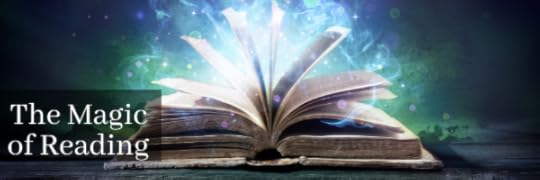
What makes a book ‘worth reading’, to me? I read everything that interests me … which is quite a lot! Of course, I’m extremely fond of great nature writing, but I have long loved biographies of amazing people, and beautifully crafted novels, whatever their genre.
As a writer whose stories also often require research, my reading habits are frequently focused on books that can help with my next project. For, example, during my research for The Ancient One, I read volumes and volumes about the history and practices of different indigenous cultures of the Pacific Northwest. And for my Merlin stories, I took a full year to read as much lore as I could get my hands on, beginning with the ancient Celtic “Mabinogian” text that dates back to the 12th century.
Even as a lover of biographies and histories, when I am seeking something new to read, there are times when what I most value in a story is its ability to send me on an adventure in my imagination. It’s really one of the closest things to magic I can think of in our world, because after all… there’s no easier way to ‘travel’ than a book — and no ticket is required!
As much as I value these journeys through my imagination when I am a reader, as a writer, I admit that some of the most memorable comments I’ve received from readers have been from those who have seen more in my stories. Over the years I’ve had the privilege of receiving messages from readers who have looked beyond the fantastic setting, thrilling battles, and mysterious creatures, and who have taken away a little more. Here’s a recent example from a girl in Massachusetts:
“I’m 15 years old and have read your Merlin series several times. What’s really fascinating is that every time I read those books, I find something new about Merlin, Rhia, Shim, and the other characters. And reading your books has really helped me with my own writing skills. So for that, I’d like to thank you. But my real thanks goes to you for something else, for helping me to figure out some of the enchantment of life. Now I know probably everybody has dreams of being a wizard with magical powers, and I sure do. But reading your books has helped me see that I could actually be a different kind of wizard in reality. I mean, I may not be able to leap from one place to another, or make a fireball come from my hand, or live backward in time, but that’s not all a wizard is about.
Mr. Barron, you’ve shown me that everyone, if they want to, can be a wizard – not on the outside with a long beard (which would be weird since I’m a girl), but on the inside. Like you said in one of your books, to have the heart of a wizard. And I do believe that possibility is in all of us.
So thank you from the bottom of my heart to the top, because now my heart has the magic of a wizard. And by the way, keep writing those awesome books!!!!!”
I’ve received so many wonderful comments from readers over the years that just thinking about them gives me a warm glow. Few things make me happier than knowing that something I wrote at my little desk in Colorado is making a real difference in the life of someone else, somewhere in the world. Even more proof of the magic of stories!
The post The Magic of Reading first appeared on TABarron.com.May 25, 2021
One Step Closer to Your Dream
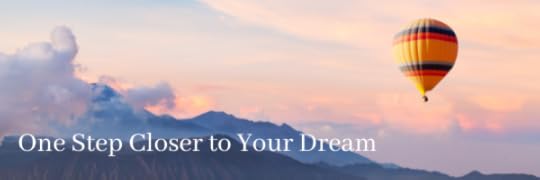
“A life — whether seamstress or poet, farmer or king — is measured not by its length, but by the worth of its deeds, and the power of its dreams.” — MERLIN: The Mirror of Fate
To be a writer has always been my dream. My first creations, written in fifth grade, were for my own, truly idiotic little magazine. (Appropriately, it was called The Idiot’s Odyssey.) When I wrote a secret exposé on what really went on inside the teachers’ lounge at my school (all made up, of course), I got into a heap of trouble! But that didn’t matter, because I’d discovered how much fun it is to write a story and share it with others.
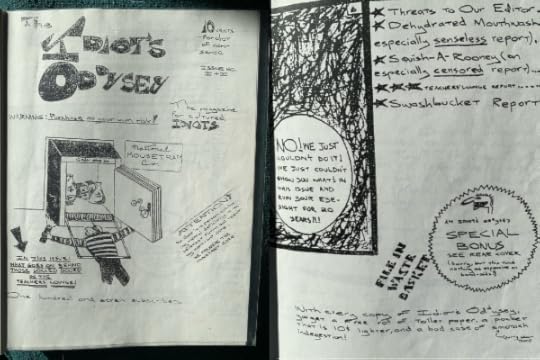
When I was a college student at Princeton, I tried hard not to major in anything, although I came close to majoring in geology, history, religion, and other things. I won a Rhodes scholarship to Oxford University in England and used that time to cast a wide net. I spent most of my time, and my earnings from summer jobs, traveling. I rode the Trans-Siberian railway, lived in southern and eastern Africa, and stopped in Japan to help roof thatched homes — all experiences that fed into my creative thinking.
After returning to Oxford, I wrote my first novel… one that collected 42 rejection letters. I toyed with the idea of retreating to a remote cabin in Alaska to write, but the mountain of rejection letters convinced me otherwise. Instead, I enrolled in Harvard’s law school, thinking of becoming an environmental lawyer. I changed my mind again and left law for a venture firm. No matter what changed, though, I kept writing.
Eventually, I resigned from that successful venture firm, moved back to my hometown in Colorado, and pursued my writing career full-time. Now, thirty years and twenty-nine published books later, I’m living proof that following your dreams means always pushing forward and reaching toward your goals.
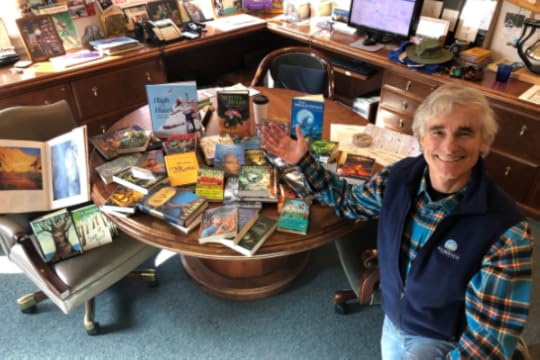
While I love that people enjoy my books for the adventures and escape to fantastic worlds, those aspects are really not what drive me to put my pen to paper. Instead, I write to pass on some big idea, to inspire kids. Inspire them to believe in the power of their dreams. All of us feel lost and alone sometimes in life — washed ashore, like the boy in the opening scene of MERLIN: The Lost Years (Book 1 of The Merlin Saga). But all of us, like young Merlin, have real magic down inside. All of us have the potential to dig deep and find the magical person in ourselves. Just like Merlin.
The experience of working hard to achieve a sometimes-elusive goal, more than anything else, has made a difference in my life. I am certain that the same will be true for you. For if you can imagine your goals, your future, and your path to making a better world — all that remains is to work hard to achieve your dreams. And you will succeed! Just stay true to yourself, and true to your dreams, and nothing can stand in your way.
The post One Step Closer to Your Dream first appeared on TABarron.com.May 20, 2021
Rocky Mountain National Park Excerpt
 ROCKY MOUNTAIN NATIONAL PARK EXCERPT
ROCKY MOUNTAIN NATIONAL PARK EXCERPT  The Gift of Enos Mills
The Gift of Enos MillsWhen Enos Mills returned to his homestead cabin one day in the late nineteenth century, he sat on his porch and gazed across the valley at the towering ridges of Mount Meeker and Longs Peak. An idea as grand as the scenery suddenly possessed him: to protect this place, forever, as a national park.
National park. The very words were revolutionary. The concept of a national park, both distinctly American and distinctly new, had only recently become a reality at a place called Yellowstone. Enos Mills knew that powerful forces — whether powered by ignorance, apathy, or greed — would oppose him. Yet he determined to set out on his quest to protect this place he called a “marvelous grouping of gentleness and grandeur,” this place where “the world stays young.”
No matter whether he would succeed or fail, he knew he must try. And he also knew that the beneficiaries of his success would be more than the land itself and all its inhabitants. As much as he loved them—the ancient bristlecone pine, the bull elk, the sparkling cascade, the water ouzel, the cunning coyote, the glorious summits — they were not his only concern. The mind, body, and soul of humanity were much on his mind. As he wrote in his essay “National Parks and National Life,” our very salvation may well depend on our ability to keep a few places truly wild.
Just as Enos Mills’ writing is filled with his passion for the land, he knew that many others would share that experience if only the land could be protected for future generations. His granddaughter, Elizabeth Mills, told me that he would often greet his travel-weary guests with an exuberant question on their first morning: “Aren’t you glad to be alive?”
A few days after I spoke with Elizabeth, I was hiking on the trail to Cub Lake with my wife and our three small children. Needles of ice glistened in the stream, while the morning sun warmed our necks. The air vibrated with the fragrant scents of emerging spring. A great blue heron chortled on high, then an elk bugled from across the meadow. Birds chattered, water bubbled, pikas whistled. Then, without warning, we felt the ground shake beneath our feet as a dozen elk poured across the trail. Watching them depart, my five year-old son, Brooks, turned to me and asked, “Daddy, aren’t you glad to be alive?”
Enos would have been pleased.
So one hundred years ago, this energetic and visionary man started writing, speaking, and crisscrossing the country to explain the wonders of this remarkable place to anyone who would listen. Fortunately, those in power ultimately heard his pleading, and Rocky Mountain National Park was finally created by an act of Congress in 1915. An editorial in The Denver Post expressed the appreciation of those who had witnessed his efforts:
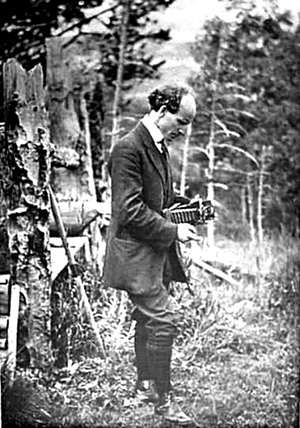 “It was Enos A. Mills, who conceived the idea of conserving nature’s wonderful workmanship in the Longs Peak region by placing it in the keeping of the United States Government, and, single-handed, he set out to accomplish this result. Single-handed, he brought it about, for all the forces that have contributed to the victory were lined up through his efforts. Others have helped, to be sure, but it was by Enos Mills’ persistent labor that they were made supporters of the movement…So let Colorado take off its hat to Enos Mills.”
“It was Enos A. Mills, who conceived the idea of conserving nature’s wonderful workmanship in the Longs Peak region by placing it in the keeping of the United States Government, and, single-handed, he set out to accomplish this result. Single-handed, he brought it about, for all the forces that have contributed to the victory were lined up through his efforts. Others have helped, to be sure, but it was by Enos Mills’ persistent labor that they were made supporters of the movement…So let Colorado take off its hat to Enos Mills.”
When the park was established, the region was still primarily wilderness, home to the mountain lion and the grizzly bear, much of it untrammeled by people but for the occasional Ute or trapper hardy enough to have roamed its ridges. Yet Enos Mills knew that time was fast running out. More and more settlers were streaming westward. Local elk had already been hunted almost to extinction. To get the point across, he would sometimes tell a story about Henry Clay, who once stopped a speech to affect the pose of a man listening to some approaching sound. When asked what he was hearing, Clay replied, “the footsteps of the coming millions.”
Nearly a century later, Rocky Mountain National Park exists in close proximity to four million people, little more than an hour’s drive from metropolitan Denver. Last year, more than three million people visited the park, about the same number who visited Yellowstone, a park eight times the size. The elk population has rebounded to a number that creates management problems outside the park and devastation of willow and aspen groves inside. The towns of Estes Park and Grand Lake, hugging tight to the park’s boundaries, continue to expand.
As John Fielder and I discovered, much true wilderness still exists here. Some areas, especially above tree line, are largely undisturbed, almost as pristine today as they were in the time of Enos Mills. Yet the balance is precarious, and the pressures on the park continue to mount.
Today’s park administrators, employees, and volunteers are struggling to protect it from the escalating crush of people and pollution. Park Superintendent Homer Rouse started as a seasonal ranger on Trail Ridge almost thirty-five years ago, then “worked my way down from there,” as he puts it, to the responsibilities he holds today. During that time, the park as well as the surrounding world has changed dramatically. Some national parks, like Everglades, Yosemite, and Grand Canyon, are at serious risk of being choked to death by the high-season traffic, or by air and water pollution. Will Rocky Mountain National Park be able to avoid the same fate? Will it be able, by example, to offer solutions to other great parks?
The National Park Service has a dual, sometimes contradictory, mandate. On one hand, its purpose is to protect and preserve many of our grandest, wildest, most inspiring places — the crown jewels of the American landscape. On the other hand, its purpose is to promote people’s enjoyment of the national parks. To reconcile the two, the management of Rocky Mountain National Park — and every other major national park — must make difficult decisions on matters as diverse as mass transportation, fire control, water rights, air and water pollution, wildlife migration routes, back-country camping, and community relations.
Undoubtedly, solutions will require bold, creative thinking, as well as hard work. It will also require treating “ecosystem management” as more than just a catchy phrase. It is a necessity. For our national parks and wilderness areas to survive intact into the twenty-second century and beyond, we must understand and respect the complex relationships between urban and rural settlements, alpine and lower altitude zones, public and private lands, animal migration corridors, water and air flows, species diversity, and prevailing weather systems. The answers lie in knowing the whole as well as the parts.
In the midst of this web of difficult issues, can we find any help from the vivid writings and sensitive photographs of Enos Mills? I believe the answer is a resounding yes. For starters, Enos Mills was not restricted by artificial boundaries in what he saw. The entire ecosystem, in all its complexity, lay before him. That grander perspective is essential to managing our national treasures in these challenging times.
Secondly, he succeeded in his efforts largely because he never forgot to let the land speak for itself. He showed fundamental respect, and basic humility, toward all that was there before humans arrived. His own personal experiences served to illuminate, not crowd out, the spirit of the place. His daughter, Enda Mills Kiley, who lives not far from Enos’ original homestead cabin and gladly shows it to people during the summer months, told me: “When he took people outdoors, he featured nature instead of featuring how much he himself knew. His whole goal was to get people curious, to help them observe.” She added with a grin, “He was especially concerned for underprivileged folks from places like New York and Boston.”
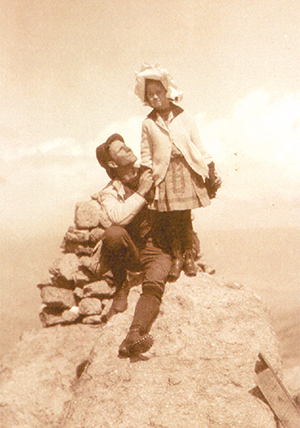 He had great patience with visitors, whether an inquisitive eight-year-old girl or middle-aged business tycoon. His files contain correspondence with some of the leading figures of his day: Theodore Roosevelt, John Muir, John Burroughs, Kit Carson, John D. Rockefeller, Eugene Debs, Booker T. Washington, Gifford Pinchot, Lowell Thomas, and Helen Keller (who reminded him, “Nature never did betray the heart that trusted her.”) Yet his favorite correspondent may well have been a young girl from Arkansas named Harriet Peters. In September 1905, shortly after her eighth birthday, he guided her to the summit of Longs Peak. Her first question, as Enos recalled in his essay “Harriet—Little Mountain Climber,” was “What lives at the top?” (Her second question was “Is it uphill all the way?”). Enos summed up their experience this way: “Of the two hundred and fifty-odd trips which I made as a guide to the summit of this great old peak, the trip with Harriet is the one I like best to recall.”
He had great patience with visitors, whether an inquisitive eight-year-old girl or middle-aged business tycoon. His files contain correspondence with some of the leading figures of his day: Theodore Roosevelt, John Muir, John Burroughs, Kit Carson, John D. Rockefeller, Eugene Debs, Booker T. Washington, Gifford Pinchot, Lowell Thomas, and Helen Keller (who reminded him, “Nature never did betray the heart that trusted her.”) Yet his favorite correspondent may well have been a young girl from Arkansas named Harriet Peters. In September 1905, shortly after her eighth birthday, he guided her to the summit of Longs Peak. Her first question, as Enos recalled in his essay “Harriet—Little Mountain Climber,” was “What lives at the top?” (Her second question was “Is it uphill all the way?”). Enos summed up their experience this way: “Of the two hundred and fifty-odd trips which I made as a guide to the summit of this great old peak, the trip with Harriet is the one I like best to recall.”
On rare occasions, Enos’ patience could wear out. Once, when he arrived in New York to speak to a prestigious club, he was informed that he would need to wear a more formal suit. He responded by sending to the club a cleanly pressed suit and a note that read, “If you want a suit, here it is. If you want a speaker, come find me in Colorado.”
Enos Mills left behind a wealth of written and photographic material. His essays are collected in books with titles like The Spell of the Rockies, Wild Life on the Rockies, Rocky Mountain National Park, and Adventures of a Nature Guide. From these sources and others — including his unpublished journals — we have selected, condensed, and titled some of his very best work for this book.
While his writings brim with reverence and enthusiasm for wild country, they also venture beyond those themes. His powers of observation were often impressive, his vision sometimes prophetic. His unpublished journals contain passages discussing the limits of a purely utilitarian view of the land, the values of beauty and silence and clear skies. He once wrote, far ahead of his time, about the “interdependence of yuccas and the moths which fertilize them,” predicting that “to exterminate one would cause the other to die.” In his later years, he wrote philosophically about war and peace: “It may be that if we quit shooting animals on one side of a park boundary line, we shall in due time become sufficiently civilized to stop killing people on the other side of a national boundary line.”
Great dignity and genuine poetry resided in this man. He said at the funeral of a neighbor, Mrs. R. H. Tallant, that “she was unobtrusive and as definite as the spruces on the height by her home.” The silver spruce itself he called “an evergreen poem of the wild.”
The Park Service granted a special research permit to make our project possible, seeing John’s photographs as a means of documenting a visual scientific record of the park’s wildest regions. While John’s images illuminate the grandeur, diversity, and ever-changing drama of the park, my own written passages are meant to bring to life some of its many moods, wonders, and surprises.
The organization of this book is intended to give readers a chance to compare the landscape of one hundred years ago, in black and white, with the landscape of today, in color. The first section features some of the finest photographs and passages composed by Enos Mills at the dawn of the twentieth century. In the second section, John and I, with a little help from Enos, try to convey the spirit of Rocky Mountain National Park at the dawn of the twenty-first. The last section contains John’s personal journal recorded with pen and camera, detailing eight eventful weeks exploring and photographing the park.
Creating this book offered us an extraordinary opportunity to experience the glories and subtleties of Rocky Mountain National Park. As we did so, our thoughts often turned to the man whose efforts opened the door for ourselves and so many others. The true gift of Enos Mills was not so much a park as it was a chance — the chance to experience this land for ourselves, to convey it intact to future generations, to cherish forever a place where “the world stays young.”
To Walk in Wilderness Excerpt
 TO WALK IN WILDERNESS EXCERPT
TO WALK IN WILDERNESS EXCERPT 
From Day 3
Rain, relentless rain. The downpour at Little Gem Lake continues unabated all through the night and well into the next day. At times fog rolls in, so thick that the ground a few feet outside our sopping tent becomes nothing more than a cloud. The rain turns to sleet, then to snow, and I watch the wide flakes settle by the thousands on the surface of the lake. The turf outside turns white as the air grows colder. Rockslides fall every few hours, the only sound outside of the swirling storm.
Trying in vain to warm my hands, I wonder: What drives otherwise sensible people to seek out experiences like this? Is there a mad streak in humanity, a perverse desire to shiver in wet sleeping bags?
Maybe we put up with the painful sides of wilderness because its pleasureful sides are so wondrously potent. Maybe all the remarkable convenience, speed and data transmission of our age still leaves us hungering for some of the basic truths and reliable rhythms of nature—so that we willingly give up comfort for the body to find comfort for the soul. I doubt it is accidental that prophets from all cultures have traditionally plunged into wilderness for a time. Wild places, and wild storms, provoke us to clarify and simplify, to distill our abundant cleverness into a few drops of wisdom.
From Day 8
Mist rises off the floor of Conundrum Creek valley, curling slowly skyward. As we follow the creek in the gentle rain, often walking in fog, we seem to be trekking through a damp rain forest. Leaves drip everywhere, lively rivulets bounce down the banks to join the creek, lupines collect glittering pearls of water within their palmate leaves.
About three miles from the trailhead, tan-colored cliffs rise from both sides of the creek. They exemplify the complex geology of this region, where rocks of widely varied ages and origins are mixed together like ingredients in a great pot of Thanksgiving stew.
Small wonder, then, that the cliffs before us have their own story to tell, one with a modern twist. In the midst of their granite faces are intrusions of marble — just as in the midst of this wilderness are the intrusions of mining claims. As we approach an infrequently worked marble mine, stepping over rusting scraps of metal, cable, bolts and machinery, it is not difficult to imagine the impact of an active mining operation on this place. Yet because of exemptions in the Wilderness Act of 1964, that is a genuine possibility. If it happens, the whisper and hush of water and leaf would give way to the screech and clatter of hammer and generator.
Wind and hail whipping our faces, we finally reach the pass at nearly 13,000 feet, a full 4,000 feet higher than our starting point this morning. We secure the llamas and set up our tents on the trail itself — the only flat place around — all the while trying to keep our gear and ourselves from blowing off the mountain.
At last, the storm subsides. The full moon, glowing like a luminous lamp, rises over a bank of pink clouds. Our world is washed in silver. We dine on a jumble of ice-crusted rocks. Our simple menu of dried fruit and granola bars turns into a grand repast because of one addition: silence. For the entire meal, none of us speaks a word. Like animals who have not forgotten how to sit quietly together, we listen to the stream, to the ridge, to the stillness of the lichened rocks.
From Day 25
From our perch on top of the pass, it is easy to follow the sun’s advance over land and sky. I turn back and forth from the sweeping pastels in the east to the deepening line of pink above the blue Earth shadow in the west. Clouds metamorphose in color, while the mountains follow, one radiant step behind. The luminous procession continues, moving over one ridge the next, one summit then another, until at last the entire world as far as we can see is bathed in new morning light. The breeze blows crisply, tousling our sleeping bags. Dawn.
Passing through a long alleyway of bluebells, we drop over East Avalanche Pass. Stark towers of stone, etched against the rich blue sky, line the ridge. Westward we can see dozens of drainages, contorted and wild, as rugged as any in the Brooks Range of Alaska. Substantial fields of snow cling to the shadowed bowls, while tufts of green grass pepper the slopes. Behind us rises a new side of Snowmass Mountain, its sharp ridge sheltering the hidden cirque we know to hold the Pierre Lakes. Enormous quantities of red paintbrush, blue lupine and yellow cinquefoil make the meadow under our feet ripple with vibrant colors.
This is a day to go on forever. As we stride along the ridge, we hear the continuous rising and falling of wind in the passes, mountain streams in the valleys, birds in the cloudless sky, shifting rocks in the ravines, all combining in a single sonorous fugue. As the ridge stretches before me, so it seems does life, full of hope and opportunity and challenge. I am ready to face anything. Even as the late afternoon light deepens the hues and shadows, signaling the inevitable approach of night, I feel far more joy at having lived this day than grief at having lost it.
By a tarn surrounded with marsh marigolds, we make camp. Sunset comes slowly and intensely, reflected on the craggy spires of Meadow Mountain and the neighboring peaks. When I awoke before dawn, my sleeping bag is coated with frost, as if the stars have descended during the night and lodged there, sparkling for a while.
May 13, 2021
The Wisdom of Merlin Excerpt
 THE WISDOM OF MERLIN EXCERPT
THE WISDOM OF MERLIN EXCERPT 
Courage
Courage is essential. How else can we dream of who we can become and what we want for the world? And it also takes courage to turn those dreams into reality.
You see, life can have great meaning—but only if we discover that meaning for ourselves. Meaning can’t be bought at any store. And it can’t be handed down like a coat that someone tells you will fit perfectly before you’ve even tried it on. Meaning must be sought and earned and made one’s own.
All of which requires courage.
Have you ever stopped to wonder why we have free will to make our own choices—some wise and gracious, some just plain foolish, some catastrophically bad? Because our choices matter. They define who we are, what values we live by, and what aspirations we honor. And if our choices matter . . . then we ourselves matter.
Think of your life as a story—a story of which you are the author. Using whatever materials you have and whatever inspiration you find, make it a story that truly belongs to you. Tell it with honesty; tell it with passion. And make it the very best story you can!
 BESTSELLING AUTHOR & CONSERVATIONIST FollowFollowFollowFollowFollowFollowFollow
BESTSELLING AUTHOR & CONSERVATIONIST FollowFollowFollowFollowFollowFollowFollow BOOKS | MERLIN: THE MOVIE | ABOUT | YOUNG HEROES | IN THE MEDIA | EVENTS | BLOG
PRIVACY POLICY | TERMS & CONDITIONS | COPYRIGHT WARNING | SWEEPSTAKES RULES
April 27, 2021
Volunteering with Children: 10 Ways to Encourage Kids to Give Back
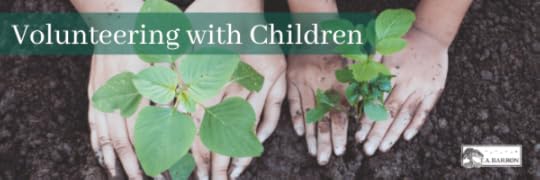
The ability of young people to help change the world for the better has been a source of joy and hope for me for many years. If you’ve ever been a reader of my blog or a follower of my work, you know how passionate I am about shining a spotlight on young people who are focused on making the world a little brighter, a little kinder, a little better for everyone.
Because I believe so strongly in the ability of young people to influence positive changes in the world around them, I’m often asked about ways to guide young volunteers, or about what sorts of initiatives might inspire or encourage today’s youth. Of course, there are so many ways to help our communities, our fellow creatures, and even our Earth itself, that there’s no single ‘right path’ to help change things for the better. What I can say, however, is that as a parent of 5 energetic young people, when it comes to inspiring them to take action I’ve found there’s no substitute for getting “hands-on” with a cause they are passionate about!
Encouraging young people to harness their energy in the form of volunteering is one of the most valuable actions you can take toward creating a better future for your children, with your children. But don’t overlook our role as adults! By volunteering along with our children, we as guardians give kids the tools they need to help make the world better. Not only does our support set a good example but the process of finding a cause to make their own is a marvelous chance to expose kids to real-life heroes, not simply the high-profile celebrities who dominate today’s media.
If you’re looking for a starting point to help spark a desire to explore and help improve the world, here is a short list of ideas that might be a great fit for the energetic young person in your life.
Volunteer Opportunities for Kids with National OrganizationsThe Tree Campus K–12 program with the Arbor Day Foundation inspires tree stewards in the next generation through experiences that bring the benefits of trees to life both inside and outside the classroom.
Habitats for Humanity’s Habitat Youth Programs instill a love of volunteering from an early age by providing a variety of volunteer opportunities for those ages 5 to 40.
Help end the African book famine by volunteering at one of Books for Africa’s warehouses.
The “youth-led movement for good,” DoSomething.org, gives teens the opportunity to make an impact, win scholarships, and earn volunteer credits.
More Ideas for Volunteering with ChildrenVolunteer at a local nursing home or assisted living facility.Read stories to younger children at schools, daycares, libraries, or churches.Pick up litter in your neighborhood.Volunteer to shelve books at a local library.Participate in a park clean-up event.Volunteer at a local animal shelter.Start a community garden.Offer to rake leaves, pick up sticks, or mow the lawn of a neighbor.Collect coats and give to a homeless shelter in winter.Place bird feeders in the yard for local wild birds.Creating young heroes isn’t all that difficult. Young people already combine the energy and idealism of childhood and the realistic awareness of adulthood. What’s more, young people want the truth and nothing but the truth. They are honest enough to ask life’s toughest questions. And they still have the courage to hope. To them, anything is possible.
The post Volunteering with Children: 10 Ways to Encourage Kids to Give Back first appeared on TABarron.com.


